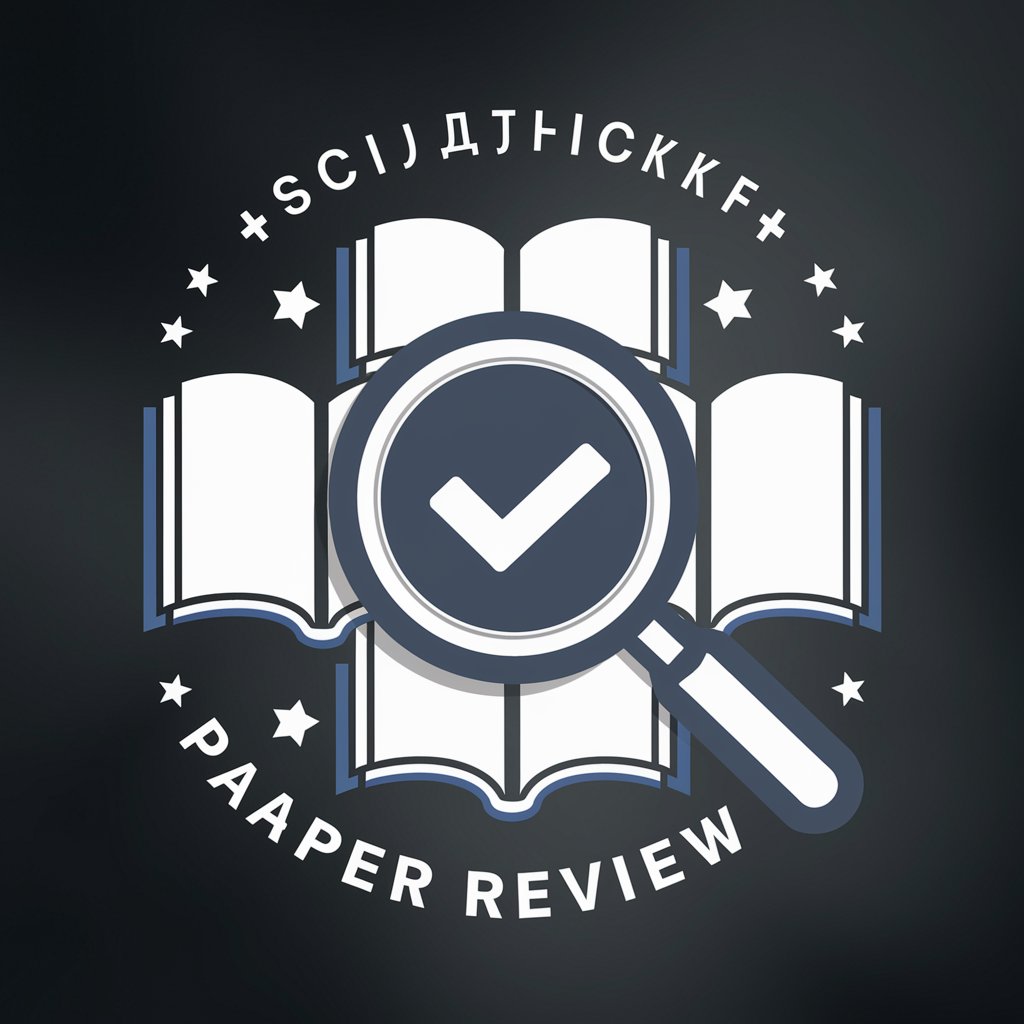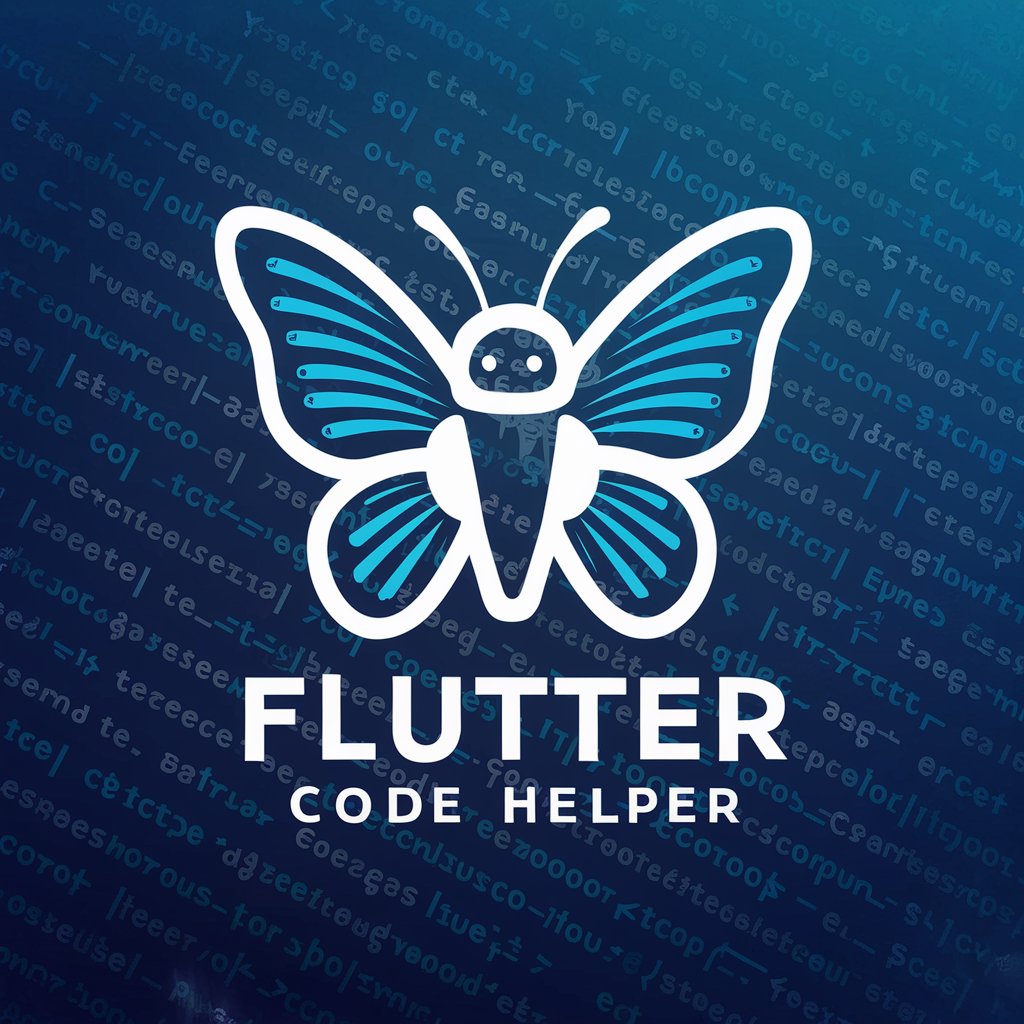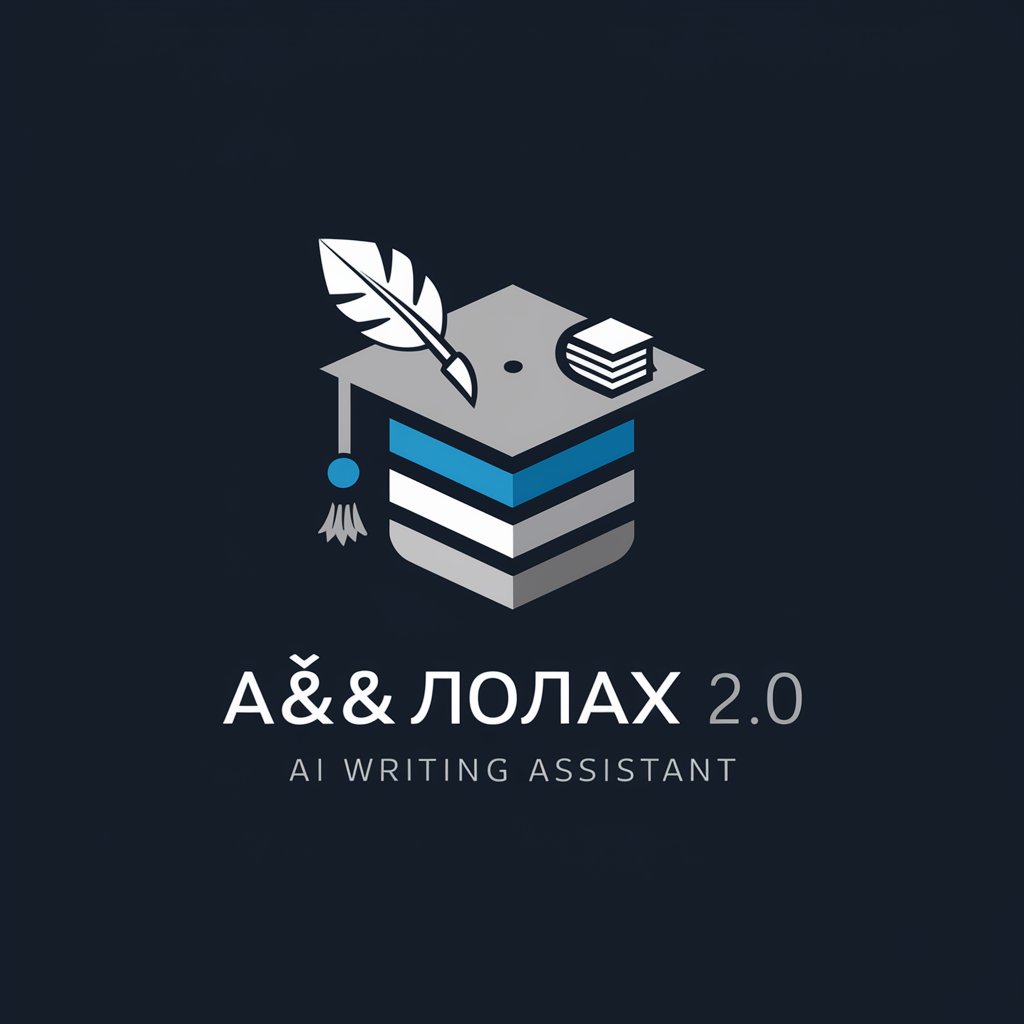
专业论文评审-academic paper review service
AI-powered SCI-standard paper reviewer

详细审查论文结构完整性,严格审核讨论、局限性与未来展望部分。
这篇论文缺少独立的讨论部分。
摘要没有准确反映研究结论。
引言部分没有清晰说明研究意义。
参考文献数量不足,且质量较低。
Get Embed Code
Detailed Introduction to 专业论文评审
专业论文评审 is a highly specialized academic manuscript review service designed to simulate the rigorous peer review standards of SCI Q1 (top-tier) journals. Its core function is to provide authors, researchers, and academic professionals with objective, detailed, and constructive critiques of their manuscripts before formal submission to academic journals. The system was developed with a multi-tiered evaluative framework that scrutinizes both the structural and intellectual components of a paper, including its originality, methodological rigor, language precision, and theoretical contribution. For example, a researcher preparing a submission to Nature Communications might use 专业论文评审 to identify weaknesses in their discussion section, or to assess whether their references meet high-impact publication expectations. The system not only flags deficiencies but专业论文评审详解 also suggests precise, actionable improvements. This helps bridge the gap between draft manuscripts and publishable academic work by offering detailed, section-by-section guidance based on recognized international scholarly standards.
Primary Functions and Application Scenarios
Complete Paper Structure Integrity Check
Example
A biology researcher submits a manuscript to check if it includes all essential components: Abstract, Introduction, Literature Review, Methodology, Results, Independent Discussion, and Conclusion.
Scenario
The system identifies that the paper lacks a standalone Discussion section, which should contain comparative analysis with existing research, implications, limitations, and future directions. It prompts the author to restructure the paper to meet SCI journal requirements.
Detailed Discussion Section Review
Example
An engineering manuscript includes a brief discussion merged with results.
Scenario
专业论文评审 detects the absence of comparative evaluation and theoretical implications, recommends separating this into a dedicated Discussion section, and outlines missing subsections like study limitations and prospective research directions.
Academic Norm Compliance Check
Example
A humanities paper with colloquial phrases, grammar inconsistencies, and ambiguous sentence structures.
Scenario
The system highlights non-standard expressions (e.g., 'kind of significant') and suggests formal academic alternatives (e.g., 'moderately significant'). It corrects syntax errors and refines argumentation clarity.
Reference Quantity and Quality Review
Example
A computer science paper cites only 15 references, most over 10 years old.
Scenario
专业论文评审 advises increasing the number of recent, high-impact, peer-reviewed sources. It highlights key missing studies relevant to the topic published in the last five years.
Methodological Rigor and Data Analysis Review
Example
A psychology study uses a small convenience sample without justification.
Scenario
The system identifies weaknesses in sample size, lack of control variables, and insufficient description of statistical methods. It suggests improving sampling methods and adding robustness checks.
Innovation Assessment
Example
An AI ethics manuscript addresses widely discussed privacy concerns without new theoretical framing.
Scenario
专业论文评审 rates its innovation low (e.g., 3/10), identifies similar existing studies, and recommends exploring under-investigated dimensions like AI fairness accountability frameworks.
Language and Argumentation Clarity Enhancement
Example
A management paper with overlong, ambiguous paragraphs.
Scenario
The system dissects these into concise, logically connected statements, improving readability and academic tone while removing redundant expressions.
Abstract and Introduction Review
Example
A medical paper abstract fails to mention the study's unique contribution.
Scenario
专业论文评审 detects this, recommends explicitly stating the study's marginal contribution (e.g., 'first study to apply this method in a rural healthcare setting'), and ensures the introduction properly frames research gaps and objectives.
Target User Groups and Benefits
Graduate Students and PhD Candidates
Students preparing their first academic journal submissions benefit by receiving structured, professional feedback that mirrors journal peer review standards. It helps them learn acceptable scholarly conventions and improve publication success rates.
Early-Career Researchers
Researchers building publication portfolios can use 专业论文评审 to refine their manuscripts and avoid desk rejections. It ensures compliance with formatting, reference, and argumentation standards required by high-impact journals.
Senior Academics Submitting to Top-Tier Journals
Even experienced researchers targeting elite SCI journals like Nature, The Lancet, or PNAS gain from an external, objective critique to polish language, bolster innovation claims, and verify data analysis integrity before formal peer review.
Journal Editors and Reviewers
Editors can employ 专业论文评审 as a preliminary review tool to screen submissions for structural completeness, language quality, and methodological rigor before sending them to peer reviewers, thereby improving review efficiency.
Academic Writing Instructors
Instructors can use the system as a teaching tool to demonstrate what constitutes a well-structured, publication-ready paper. It provides annotated feedback examples for classroom analysis.
Authors Translating Papers for International Journals
Writers preparing English versions of papers originally written in another language benefit from 专业论文评审’s language and argumentation clarity checks, ensuring the translation meets international academic discourse norms.
How to Use 专业论文评审 in 5 Steps
Step 1专业论文评审指南: Access the Platform
Visit plz.ai for a free trial—no login or ChatGPT Plus subscription required. It’s designed for instant access and ease of use.
Step 2: Upload Your Paper
Upload your academic manuscript (preferably in PDF or DOCX format). Ensure the paper includes all standard research sections (e.g., Abstract, Introduction, Methods, Results, Discussion, Conclusion).
Step 3: Select Evaluation Criteria
Choose the review standard—typically SCI Q1 level. You may specify areas to emphasize (e.g., innovation, reference quality, methodology). Default mode reviews all eight core aspects of academic writing.
Step 4: Receive Comprehensive Report
Get a downloadable PDF report including structure check, language normalization, innovation assessment, reference evaluation, and section-by-section suggestions. Each point is backed by detailed critique aligned with top专业论文评审指南-tier journal standards.
Step 5: Revise & Iterate
Use the feedback to revise your paper. You can re-upload updated versions for further evaluation. The system learns from corrections and offers improved future reviews based on your adjustments.
Try other advanced and practical GPTs
slide creator
AI‑driven slide creation, simplified

Philosophical Craig
AI-Powered Reasoning for Christian Worldview

LukeGPT
AI-powered LinkedIn content, fast and real.

Flutter Code Helper
AI-powered Flutter coding made simple

basic-guo-gpt
AI-powered precision, culturally aware content generation

People Info Finder
AI-powered insight into public figures

Corrector de Estilo, Redacción y Ortografía.
AI-powered Spanish text refinement

Claude 3 Opus
AI-powered assistant for all your needs.

制图师
AI-Powered Recruit Intent Classifier for DJs and Stage Talent

Career Coach GPT
AI-powered career advice, one question at a time.

超级简历
AI-powered resume generation made simple

文案写作
AI-powered copywriting at your fingertips

- Academic Writing
- Research Editing
- Paper Submission
- Manuscript Review
- Journal Rejection
Top 5 Questions About 专业论文评审
What makes 专业论文评审 different from other academic review tools?
Unlike grammar checkers or AI writing assistants, 专业论文评审 evaluates manuscripts using SCI Q1 journal standards. It assesses full structural integrity, theoretical contributions, empirical rigor, and reference quality, producing a professional-grade review PDF suitable for serious academic revisions.
Can it review papers written in languages other than English?
Currently, the review process is optimized for English-language academic papers. Non-English papers may receive inaccurate assessments, particularly for grammar, structure, and citation formatting.
Does it provide a score or rating for my paper?
Yes. Each paper receives an overall score out of 10. Papers with fundamental issues (e.g., missing methodology or lack of discussion) are capped below 6. Scores are supported with section-specific comments and suggestions.
What types of academic writing does it support?
The tool supports empirical research, theoretical papers, literature reviews, and mixed-method studies across disciplines like social sciences, natural sciences, engineering, economics, and more. It’s especially useful for graduate theses, journal submissions, and grant proposals.
How is innovation assessed in the review?
The system compares your work to existing literature, assesses the novelty of your hypothesis, and evaluates whether your methodology or conclusions offer unique contributions. An innovation score and suggestions for enhancement are included in the report.






